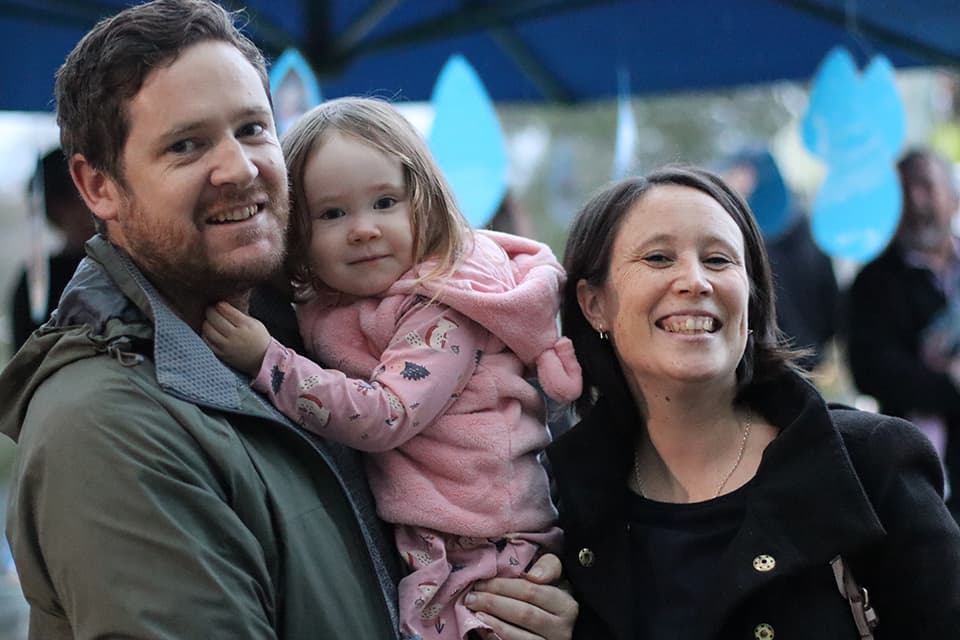
Matariki has become synonymous with the celebration of the Māori New Year. Matariki is the name of a star cluster, and when it is visible in the night sky, this marks the change in season and the start of the first lunar cycle of the maramataka (Māori lunar calendar).
Matariki is part of a bigger constellation called Te Waka o Rangi. It is a canoe with Matariki at the bow (front) and Tautoru (Orion) is at the stern (back). The waka is captained by a tupuna (ancestor) named Taramainuku whose mahi (work) it is to cast a cosmic net across the earth as the sun sets each day. With this net, Taramainuku trawls for the wairua (spirits) of those who have died. Each day he hauls the net up to the sky and hangs it off the back of his waka. This story tells how our dead are carried across the heavens by a waka lead by Matariki. As the sun rises, Taramainuku casts the wairua of the dead into the sky where they become part of the cosmos. Kua wheturangihia is a way of saying someone has died in te reo Māori, it literally means they have become stars.
There are nine stars in the Matariki cluster. Each star in the cluster relates to a part of te taiao (the natural world). The exploration and celebration of Matariki represents the interconnectedness which is central in Te Ao Māori. Below is an introduction to each star of Matariki and how they connect with te taiao. There is a wealth of information for further learning available online through the work of many people who are reclaiming and disseminating this ancestral knowledge.
There are many stories about Matariki and its origins. One story tells of the anguish of Tāwhirimātea (Atua of the wind and storms) when his parents Ranginui (Sky Father) and Papatūānuku (Earth Mother) were separated in the creation of Te Ao Mārama (the world of light). Tāwhiri was so pained by this separation that he tore out his own eyes and cast them to the heavens. Mata-a-te-ariki means ‘eyes of the paramount chief’ referring to this story, where Matariki are the eyes of Tāwhiri.
Another story tells of a celestial whānau (family) where Matariki and another star, Rehua (Antares) have eight daughters. Matariki is their mother, and cares for her daughters who make up the cluster.
Waipunarangi is the star in the cluster connected with the rain. It literally means water that pools in the sky. Māori consider water a taonga and hold great reverence for its life-giving power.
Waitī is the star in the cluster connected with fresh water. Iwi (tribes) lived in balance with te taiao. This subsistence lifestyle meant living near bodies of water such as awa (rivers) and roto (lakes) to have access to the kai (food) they provide.
Waitā is the star in the cluster connected with salt water. Coastal iwi held great respect for the power of Tangaroa and Hinemoana (the male and female spiritual elements of the ocean) and the kai they provide.
Ururangi is the star in the cluster connected with the wind. Tāwhirimātea and Hinehau (the male and female spiritual elements of the wind) were revered for their power to bring both destruction and relief.
Tupuanuku is the star in the cluster connected with food that comes from the earth. Tupuanuku literally means grown from the earth and connects with the Atua (spiritual embodiments of the natural world) Papatūānuku (Earth Mother), Haumiatiketike (wild growing food), and Rongomātāne (cultivated food).
Tupuarangi is the star in the cluster connected with food that comes from the sky. This star is connected with Ranginui (Sky Father) and tells of Māori reliance on birds as a food source.
Pohutukawa is the star in the Matariki cluster connected with remembering those we have lost. Some iwi (tribes) would call out the names of those who had died in the past year as part of a Matariki ceremony.
Hiwa i te rangi is a star in the cluster connected with wishes, desires, aspirations, dreams and potential. As with the Pākehā new year’s resolution, we can send our wishes, and set our intentions through karakia (prayer) and wānanga (discussion) with Hiwa.
In early childhood we are always seeking authentic and meaningful ways to integrate and naturalise Te Ao Māori in our practice, policies and philosophy. Matariki provides a wonderful gateway to explore deeper learning and discussion about the Māori world view.
For our community, Matariki is a time for learning, but also celebration and togetherness. This whakatauki (proverb) tells of coming together during the winter months, as we will to celebrate te wā o Matariki.
Kua tino matao te tangata, me te tahutahu ahi, ka panaina.
People are now extremely cold, and so kindle the fires before which they bask.